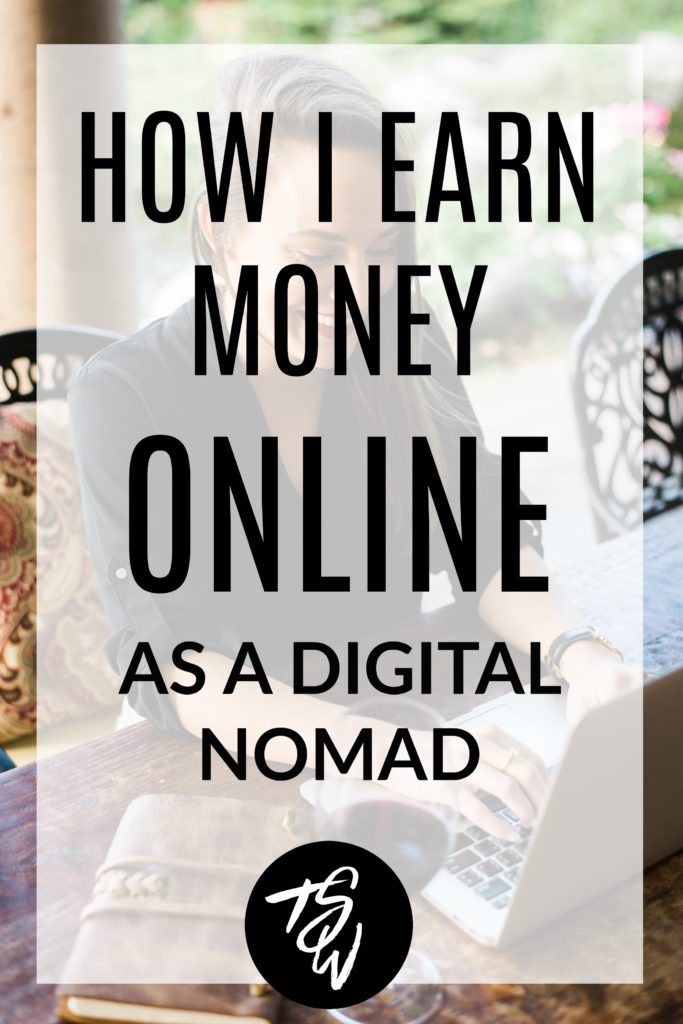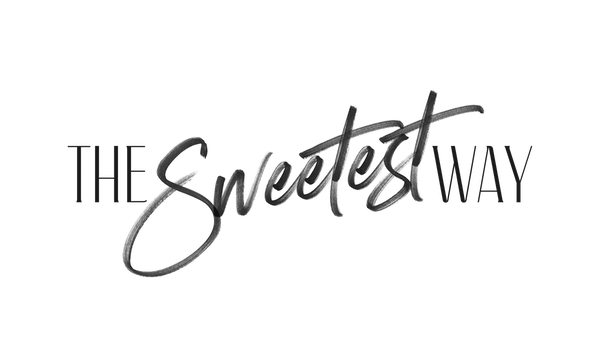This blog post is one I’ve been toying with writing for a long time now. I know people are curious about how digital nomads earn money online–most seem to make it look effortless while they’re “living the dream” on far-flung beaches (when the reality is anything but).
And I’m sure you’ve read a million other posts like this before because just about every blogger has one, but I figured since everyone’s story is a little different, it wouldn’t hurt to put mine out there, too.
You can never have too many ideas for how to earn money online, especially when you are first starting out and still figuring out what your strengths are. You might just find the inspiration in here to monetize a skill you never thought would be useful, or to start a blog or business of your very own.
You can also head to this related post to learn how to start a side hustle online that can eventually become your full-time remote gig!
There is NO doubt that my income streams will change a lot over time. In fact, I’m hoping they do!
My ideal lifestyle involves more passive income and less working for other people, but I have a way to go still before I achieve that. It’s all about patience and persistence.
This post is NOT intended to be a how-to guide for earning money online, however (see the above link for that!).
What worked for me might not work for everyone, but I do hope it provides at least a little inspiration for how you, too, can begin to earn money online on your journey to location independence.
Please note: This post contains affiliate links, meaning I may earn a small commission if you make a purchase, at no extra cost to you. Thank you for supporting The Sweetest Way!
How I Earn Money Online
I, like many others, never set out with intentions of blogging as a business. I had a vague idea that I’d like to make money from blogging someday, but I had no idea what that would look like at the time.
After nearly three years of blogging, here are the primary income sources I’ve managed to build and how I’ve been able to continue making a living while traveling at my own pace.
Social Media Management
The first thing I did to earn money online was to become a virtual assistant to a close friend of mine. This successful veteran blogger suddenly needed help managing her social media accounts and was generous enough to offer the position to me, a new blogger myself at the time.
Eventually, I developed a particularly strong Pinterest strategy that has since helped me gain a handful of Pinterest-only clients who pay a monthly fee for me to manage every aspect of their accounts.
I have not actively sought after new social media clients because it isn’t my long-term goal to work as a social media manager, although I get new inquiries about my Pinterest services on a regular basis and could easily upscale if I wanted to. Check out this post for a more detailed explanation of how I got into Pinterest management and consulting.
I always encourage new bloggers who are looking for remote work to consider working for another blogger as a virtual assistant. With more and more bloggers earning a full-time income these days, there is an ever-increasing demand for these services and new bloggers have the precise skill set needed. It’s a great place to start, even if you don’t plan to do it forever.
I’ve been a member of blogging communities like Superstar Blogging for several years now, and one of the best perks of this membership is the Opportunity Board where bloggers regularly post ads seeking to fill positions such as social media assistants (and who knows, I might be one of them someday!).
Networking in the private Facebook group is a good way to make these connections and learn of job opportunities as well.
Pinterest Consulting
In addition to my Pinterest account management service, I also offer one-on-one strategy consulting over Skype. This service came about as another side effect of the events I discussed above.
I knew I had a valuable skill that many bloggers would need to learn as a part of their content marketing toolkit (Pinterest is the largest source of traffic for many bloggers across all niches) and so I began offering these Skype consultations and, thanks to the reputation I built for myself within the travel blogging community, I’ve received a steady flow of new clients each month.
As with every other social platform, Pinterest changes constantly and as such, offering this service requires a lot of self-study on my part in order to stay up-to-date and ensure that my strategies are still effective.
Most recently, I enrolled in a Pinterest course called Pinterest Organic Traffic Avalanche to refine my strategy and keep those page views rolling in–an investment that was worth every penny.
Affiliate Marketing
Affiliate marketing is when a publisher (someone like me with a blog or website) earns a commission by promoting other people’s products or services.
This is a relatively passive form of income once you’ve put in the initial work to set up your systems or “sales funnels.” For this reason, I intend to use affiliate marketing as one of my primary monetization strategies so I can spend less time working and more time doing the things I love (like traveling!).
Affiliate marketing works best when publishers promote products and services they already use and love themselves. That’s why on my site you’ll likely see me recommending the cool travel products I use, the electronics and photography gear I travel with, or my favorite accessories in my carry-on bag.
Perhaps you’ll hear me singing the praises of my mobile service provider because they offer great phone plans for international travel. I’ll also sometimes promote a blogging-related service that I love, such as my web hosting provider, the email service that’s helping me grow my list and make sales, or the courses that have helped me turn my blog into a business.
By recommending the things that I know to be high-quality and that have proven useful to me, I’m helping my readers while maintaining their trust. And in most instances, I will link to stuff I like anyway, whether I have an affiliate relationship with the brand or not.
Sometimes an affiliate program will pay just for leads (such as when someone joins their email list); other times they will pay a small percentage of the sale price of the product or service, and other times still they will pay a set amount for each unit sold.
In every instance, though, this happens at no extra cost to the consumer–it is a form of profit sharing between the company and the affiliate.

Until this year, I wasn’t making much money from affiliate marketing, but that’s all starting to change. There is a LOT of information out there about affiliate marketing best practices, and it can be hard to put the pieces together and make it work for you.
I struggled for a long time because I simply didn’t know where to make changes, or how to write the type of content that would convert. Thankfully, I finally invested in myself and took a course dedicated to the topic.
Everything I (now) know about affiliate marketing I learned from the course Making Sense of Affiliate Marketing by Michelle Schroeder-Gardner of Making Sense of Cents.
There are plenty of similar courses out there, but I knew I could trust in Michelle’s expertise. How, you ask? Well, for starters, her blog brings in $50,000 per month through affiliate marketing alone; she’s a freaking BADASS and if that’s not proof of a successful affiliate marketing strategy, I don’t know what is.
I finished her course in roughly one month, implementing many of the strategies as I went and seeing immediate results. Not long after, I had one of my highest-earning months from affiliate marketing EVER.
Thanks to this premium course, I know affiliate marketing will become one of my main sources of income in the near future and my investment will pay for itself many times over.
And since you’re probably wondering, yes, I immediately signed on to be an affiliate for this course, because I believe so strongly in the quality of the material.
Display Ads
You’ve probably noticed the display ads on my site. I would be very surprised if you hadn’t because, let’s be honest, it’s pretty obvious they’re ads!
They are the images floating around in my content, in my sidebar, and a few other places.
I wasn’t sure whether display ads would be a part of my monetization strategy at first because many bloggers see them as offensive or think those of us who use them are “selling out.”
I’ve become quite accustomed to seeing them on most websites these days, though, so I’m not one to take offense, nor have I ever had a reader complain about the presence of ads on my site.
In the beginning, armed with very little knowledge of anything relating to display ads, I created a Google Adsense account and threw a few up on my site. The results were unspectacular, to say the least.
Over time, I played around with their placement a little bit and saw a slight improvement, but never reached the earning threshold for a payout in a single month (Google’s payment threshold is $100 and I would average closer to $40 per month).
More recently, I discovered a publisher network called Mediavine that promised to take the headache out of my display ad strategy while securing me much higher rates from advertisers. I made the switch one month ago and the results this time have been, well, spectacular!
Even though Mediavine takes a sizeable percentage of your earnings as their fee (25%) I still earned four times as much in my first month as I ever earned with Google Adsense.
As my blog traffic (and Mediavine’s publisher network) continues to grow, so will my earnings. Woo!
Sponsored Content
Every so often, a company will reach out to me hoping to place “branded” content on my blog as a way to reach a new audience and increase brand awareness, and hopefully generate sales.
This type of blog post will almost always be written by me, in a way that incorporates the brand into a unique and compelling story.
Other times I will try a product or a service and write a review, either in exchange for the product on its own (depending on the value) or for a fee, maintaining a tone of transparency and honesty the whole time (and making sure to include the negatives if there are any).
If a company ever expects me to write only positive things in a sponsored post, I will turn down the opportunity, plain and simple.
It’s a challenge to choose the right opportunities when it comes to sponsored content because I always want to make sure the product or service is interesting and relevant to you and that the company’s values align with my own. I’d never want to risk losing my readers’ trust just to make a quick buck.
This means I turn away far more opportunities than I take, so from month to month, this is not a huge source of income for me. This year, I averaged just one sponsored post per month.
For some examples of sponsored content I’ve written in the past, check out this app review and this post about how my travel style has evolved over time. Anytime I receive financial compensation or a complimentary product (like in this post), the post will contain a disclosure, as required by the Federal Trade Commission.
Ebook Sales
This year, one of my major goals was to create my very first digital product.
My eBook, Take Your Life Back: Finding Freedom Through Location Independence, is a handbook for becoming location independent, detailing everything I’ve learned over the last few years and providing many valuable resources for people who want to pursue a similar lifestyle.
It was a HUGE milestone for me and something I had been wanting to do for a long time. I knew that incorporating information products into my money making strategy would be absolutely essential, and this was my way of testing the waters.
The most successful online entrepreneurs I know of (the ones bringing in six-figure incomes) have built their businesses around the sale of information products, and this will be a large component of my business plan in the coming years.

The launch proved more difficult than I imagined with my busy travel schedule and I made a lot of mistakes, but overall it was a great learning experience that I can’t wait to improve upon next time. The fact that so many bloggers never create and sell their own products is completely baffling to me, as it’s something that can be a reliable source of income for years after putting in the initial effort.
Sales of my first eBook have been up and down, but overall the reactions to it have been overwhelmingly positive and I’m proud of the valuable resource I created. I plan to bring on a handful of influential bloggers as affiliates to help me promote it to a wider audience, so I expect sales to increase before the year is over.
UPDATE: My eBook was updated and re-released in April 2017 with four new added chapters, many others expanded, and a whole host of new links and resources included to help people build the life of their dreams (get the second edition here!).
I’ve also increased the sales price which I should have done from the very start. No one is going to value to a book that’s being sold for pennies, so don’t be afraid to put a premium price on your digital products.
Freelance Writing
I almost didn’t include this section because freelance writing is not one of the primary ways I earn money online at the moment.
It is something I dabbled in when I first began blogging (I was a regular contributor to Medellin Living when I lived in Colombia, for example) but is not something I regularly seek out.
My last paid freelance writing gig was almost one year ago–it paid very well, but it was the kind of writing that I just didn’t enjoy.
Should the right opportunity present itself in the future, I may consider it again, but for now I am doing just fine without it.
Paid travel writing is another common gig posted to the Superstar Blogging Opportunity Board and, in fact, all of my past paid writing came to me through fellow SSB members.
Rewards Programs
I recently started using rewards and cashback programs to earn a little bit of extra cash for just doing the things I would normally do online anyway.
While this is by no means a large contributor to my income, it’s a fun way to monetize my free time and my “breaks” in between more important tasks.
My favorite website for earning cash rewards is Swagbucks–I can watch videos, complete polls and surveys, or sign up for great deals to earn points that can be cashed out as gift cards (including PayPal or Visa cash cards).
Ebates is another great website for earning cash back for the online shopping that you already do.
As for the future…
I will most likely have to write an updated version of this post in a year’s time because I have a lot of ideas that I have yet to put into practice and I’m sure others are bound to crop up as I go.
Ideally, I will be entirely self-employed and not working as an assistant to other bloggers (it would be amazing to have my own assistant someday).
I plan to continue focusing my energy on passive income streams rather than the services that take up my time, like consulting. My time is not scalable; product sales and affiliate marketing are.
I’d like to create more information products like e-books and e-courses and automate sales through email marketing, which is something else I’m currently focusing on improving.
No matter what happens, though, it has been a fun and challenging journey and I’m excited to see what the future holds!
Are you location independent and earning a living online? I’d love to hear what’s working for you! Leave me a comment below and let’s learn from one another!
Photos by Megan Kathleen Photography.



